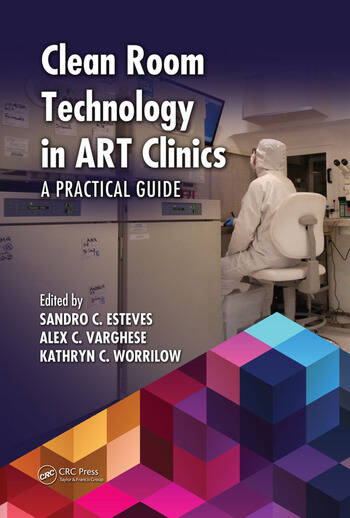A new book of interest 'Clean Room Technology in ART Clinics: A Practical Guide', edited by Sandro C. Esteves, Alex C. Varghese, Kathryn C. Worrilow.
Regulatory agencies worldwide have issued directives or such requirements for air quality standards in embryology laboratories. This practical guide reviews the application of clean room technology or controlled environments specifically suited for Assisted Reproductive Technology (ART) Units. Its comprehensive coverage includes material on airborne particles and volatile organic compounds, including basic concepts, regulation, construction, materials, certification, clinical results in humans, and more.
Tim Sandle has contributed a chapter, titled 'Clean room design principles: Focus on particulates and microbials'.
Further details about the book can be found here.
Sandle, T. (2017) Clean room design principles: Focus on particulates and microbials. In Esteves, S. C., Varghese, A. C., and Worrilow, K. C. (Eds.) Clean Room Technology in ART Clinics: A Practical Guide, CRC Press, Boca Raton, U.S., pp75-91
Posted by Dr. Tim Sandle
Regulatory agencies worldwide have issued directives or such requirements for air quality standards in embryology laboratories. This practical guide reviews the application of clean room technology or controlled environments specifically suited for Assisted Reproductive Technology (ART) Units. Its comprehensive coverage includes material on airborne particles and volatile organic compounds, including basic concepts, regulation, construction, materials, certification, clinical results in humans, and more.
Tim Sandle has contributed a chapter, titled 'Clean room design principles: Focus on particulates and microbials'.
Further details about the book can be found here.
Sandle, T. (2017) Clean room design principles: Focus on particulates and microbials. In Esteves, S. C., Varghese, A. C., and Worrilow, K. C. (Eds.) Clean Room Technology in ART Clinics: A Practical Guide, CRC Press, Boca Raton, U.S., pp75-91
Posted by Dr. Tim Sandle














